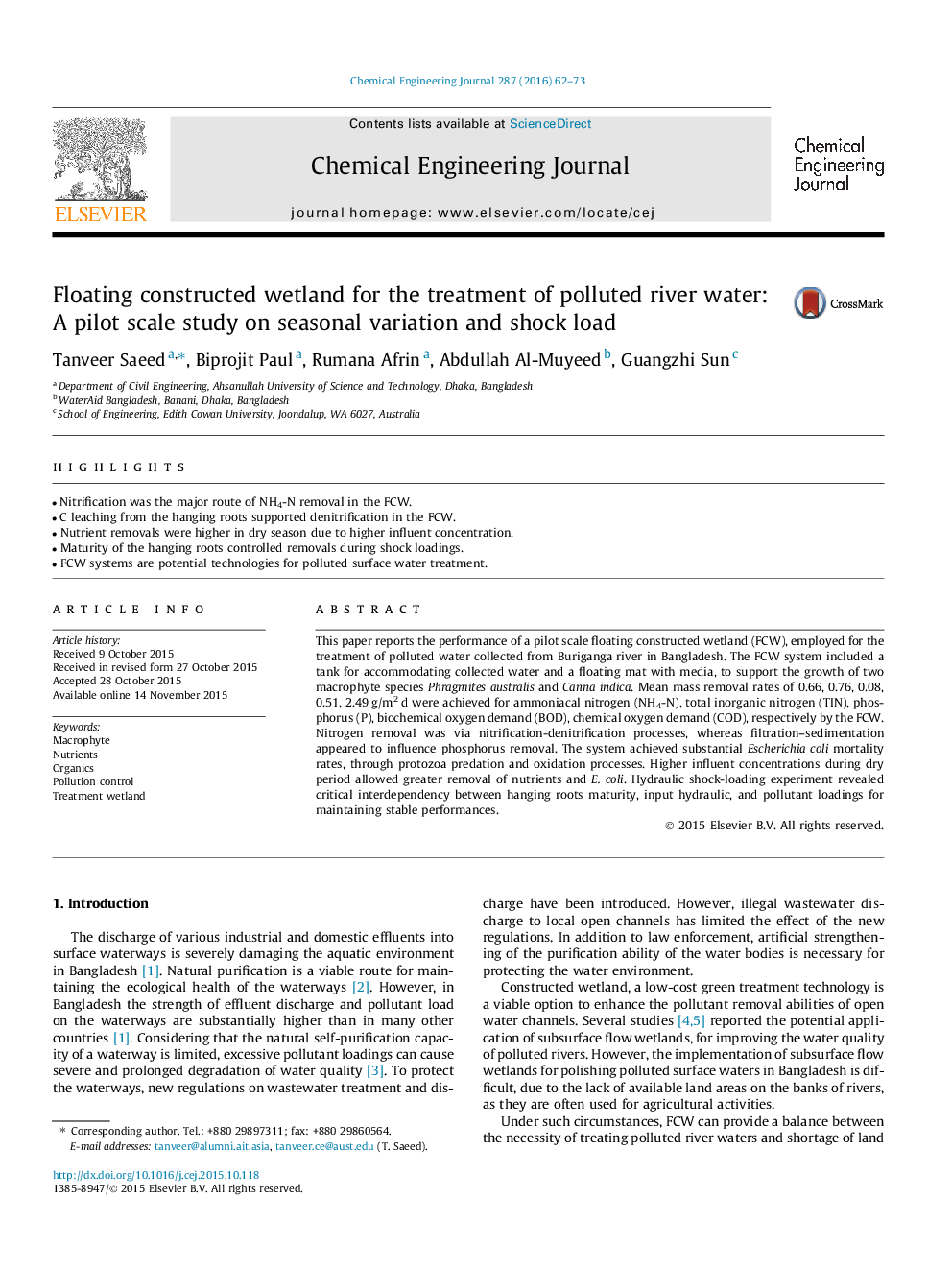| کد مقاله | کد نشریه | سال انتشار | مقاله انگلیسی | نسخه تمام متن |
|---|---|---|---|---|
| 145874 | 456354 | 2016 | 12 صفحه PDF | دانلود رایگان |
• Nitrification was the major route of NH4-N removal in the FCW.
• C leaching from the hanging roots supported denitrification in the FCW.
• Nutrient removals were higher in dry season due to higher influent concentration.
• Maturity of the hanging roots controlled removals during shock loadings.
• FCW systems are potential technologies for polluted surface water treatment.
This paper reports the performance of a pilot scale floating constructed wetland (FCW), employed for the treatment of polluted water collected from Buriganga river in Bangladesh. The FCW system included a tank for accommodating collected water and a floating mat with media, to support the growth of two macrophyte species Phragmites australis and Canna indica. Mean mass removal rates of 0.66, 0.76, 0.08, 0.51, 2.49 g/m2 d were achieved for ammoniacal nitrogen (NH4-N), total inorganic nitrogen (TIN), phosphorus (P), biochemical oxygen demand (BOD), chemical oxygen demand (COD), respectively by the FCW. Nitrogen removal was via nitrification-denitrification processes, whereas filtration–sedimentation appeared to influence phosphorus removal. The system achieved substantial Escherichia coli mortality rates, through protozoa predation and oxidation processes. Higher influent concentrations during dry period allowed greater removal of nutrients and E. coli. Hydraulic shock-loading experiment revealed critical interdependency between hanging roots maturity, input hydraulic, and pollutant loadings for maintaining stable performances.
Journal: Chemical Engineering Journal - Volume 287, 1 March 2016, Pages 62–73
